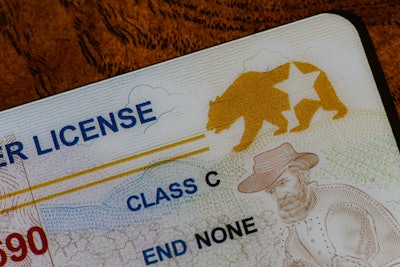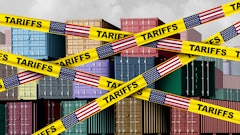
In times of financial strain, businesses tend to batten down the hatches to weather the storm, but cracks in their infrastructure inevitably remain. Some of the most prolific vulnerabilities sit within third-party relationships with vendors and contractors, which explains why these supply chains have become victims of relentless fraud and theft as criminals set their sights on opportunistic exploitation in and amongst the chaos of market instability.
While high-value luxury items and electronics have traditionally been the ultimate prize, thieves have now turned their attention to everyday goods such as household essentials. These items can be stolen, resold and shipped in bulk through secondary markets, or shipped and sold overseas, making these types of products a new currency of fraud during times of economic uncertainty. When everyday goods such as toiletries, clothing and other goods are stolen on their way to a destination, the knock-on effect can be huge across inventory planning, pricing structures and brand reputation. For businesses, this means having to respond to unforeseen gaps in stock and explaining to partners and consumers why essentials are missing from shelves. For end-customers, they’re met with retailers inflating prices in an attempt to recover costs, which leaves them with uncertainty coupled with rising frustration levels.
The sophistication of fraudster’s methods has reached a new high. Instead of relying on brute force or opportunistic break-ins, most of the action takes place digitally, using forged documentation and fake identities to bypass defenses. Access to AI tools makes deepfake detection a must when examining IDs.
Rising instances of insider threats and fraud not only challenges compliance adherence across contractors and vendors, but it shows that criminals are also hitting supply chains where it hurts the most: the trust and resilience they work so hard to build. Seeking out any system weakness, these fraudsters leave businesses exposed to repeated losses at an already challenging time, adopting digital disguises to infiltrate what on the surface is thought to be a trusted network of organizations.
Fraud is on the rise
The impact of fraud across the supply chain between vendors and their contractors is vast when you put everything in perspective. Recent data from over 350,000 identity scans of logistics personnel in 2025 showed that 2.36% of IDs were fake or suspicious, and 0.83% held expired documents. Whilst these percentages seem small at face value, the reality quickly becomes clear when you consider the scale of the workforce. The U.S. Bureau of Labor Statistics reports roughly 6.6 million people were employed in transportation and warehousing in 2024. So, even 3.19% of unverified identities could actually signify over 210,000 potentially fraudulent workers.
For bars and nightclubs, which might be a more prolific industry for use of fake IDs, their rates usually peak at around 2% on an annual basis. Suddenly these percentages don’t seem so insignificant.
This all proves what vendors have known for a long time; that their supply chains are only as strong as their weakest link. And right now, there are still too many weak links left for fraudsters to exploit.
Protecting products and people
Ringfencing their transported goods is only one of the things businesses must do. Perhaps more importantly, they have a duty of care for their frontline workers. As the first line of defense, this exposes staff to greater risk: when criminals exploit weak identity checks, it is these individuals who face the stress, confusion and potential danger of interactions with fraudsters. Protecting cargo, therefore, cannot be separated from protecting the people responsible for moving it.
ID verification systems are critical in replacing these weak links and strengthening the relationships between vendors and contractors. Modern technology like AI has a huge role to play in enhancing these capabilities and ensuring compliance between third parties. Its ability to analyze vast datasets means it can instantly detect fake IDs, flag suspicious patterns and identify inconsistencies. Integrating these systems with authoritative databases, such as those shared by the Department of Motor Vehicles (DMV), only makes companies’ defenses and compliance stronger, as they can validate driver credentials in real-time, eliminating the risk posed by expired or fraudulent IDs and providing a reliable safeguard against unauthorized access.
Third-party relationships are built on trust
The strength of the relationship between vendors and contractors lies in the supply chain’s resilience and the trust each business has in the other. If parties hold the slightest bit of doubt as to who is transporting their goods – and whether they are who they say they are – that trust breaks down.
Economic downturns create the perfect conditions for fraudsters in their new “line of work.” As margins shrink and consumer demand shifts, the black market for cheaper everyday goods grows. Much like supply and demand in any industry, thieves and fraudsters understand this dynamic and exploit it by moving stolen products into secondary markets where retailers, pressed by cost pressures, are more willing to overlook questionable supply sources.
With this knowledge, businesses can bolster their defenses as needed, well aware that these acts of theft are far from one-offs and instead are a behavioral pattern that can and should be expected.
Making sure ID verification is up to scratch is Step 1. As the physical link between vendors and their contractors, logistics teams are under pressure to ensure products are delivered safely and consistently, while ensuring each party remains compliant. With robust ID verification, organizations can protect the three most important things: their people, their product and their brand. As fraud techniques become more sophisticated, so too must our preventative measures.



















